The collection of terracotta sculptures of warriors, chariots and horses (also known as the Terracotta Army) gained fame worldwide with its first discovery by local farmers in 1974. Thousands of these terracotta figurines have been discovered so far and they are dated back to the Qin dynasty more than 2200 years ago. The Terracotta Army is part of the burial objects in the Mausoleum of Qin Shi Huang (秦始皇), The First Emperor of China, meant to protect the emperor in his afterlife. Other than the terracotta figurines, other burial items discovered includes bronze chariots, horses, cranes, acrobatic figurines and weaponry.
The bus ride from Xi'an Railway Station (西安站) took around an hour. Once we reached there, we followed the crowd to the ticket office and purchased the entrance tickets. The Terracotta Army Museum (秦始皇兵马俑博物馆) is part of the bigger Emperor Qinshihuang's Mausoleum Site (秦始皇帝陵博物院), which also comprise of the Emperor's Tomb Mound at the foot of Mount Li (秦始皇帝陵 - 骊山园). The entrance tickets we purchased permits visit to these 2 locations. The Emperor's Tomb Mound is located 2.2 km away from the ticket office and the Terracotta Army Museum (秦始皇兵马俑博物馆). Visitors could take the free shuttle bus services between these 2 locations. As the tomb is not excavated, what visitors could see is only the earth mound covered with vegetation. In addition to time constraints, we won't be visiting the Emperor's Tomb Mound.
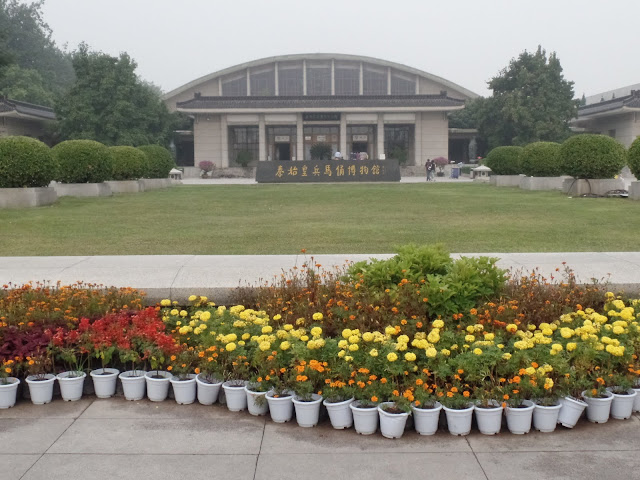 |
| Qin Shi Huang Terracotta Army Museum |
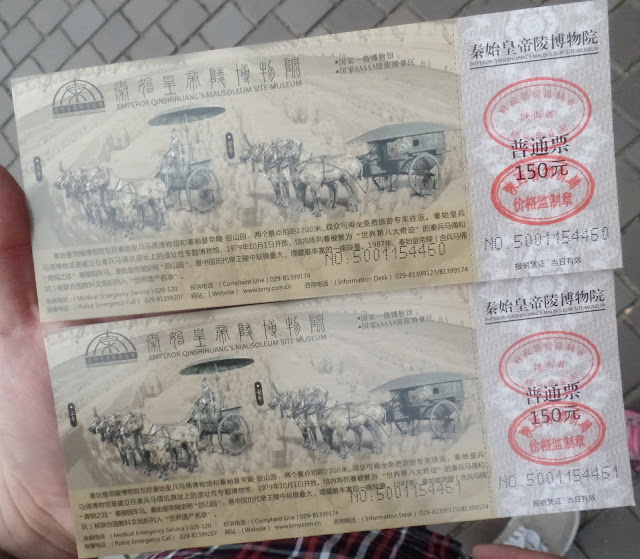 |
| Entrance tickets |
There are many tour guides (licensed), including English speaking, outside the entrance that free and easy visitors could engaged for touring the museum. From the ticket office, it was another 15 minutes walk through the park before we reached the excavation pits. We started exploring Pit 1, which is also the biggest excavation pits, followed by Pit 2 and 3. The entire Pit 1 is enclosed within a mega structure, which protects the site from external weathers. What lay in front of us was the majestic view of columns of terracotta warriors and horses, positioned in an army battle formation. Each of these figurines were handmade, lifelike and having different facial expressions and postures. All these made us admire the great wisdom and the skillful craftsmanship that the ancient Chinese had more than 2200 years ago.
 |
| View of Pit 1 |
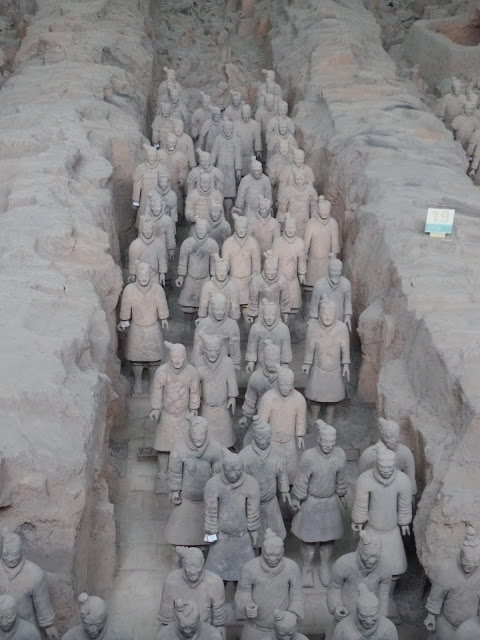 |
| Terracotta warriors |
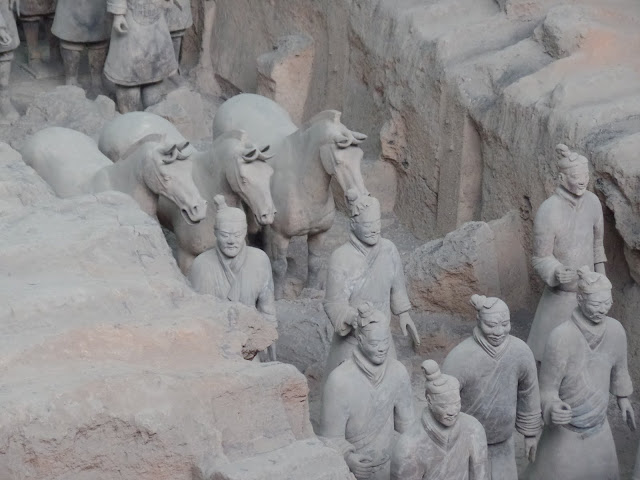 |
| Terracotta warriors and horses |
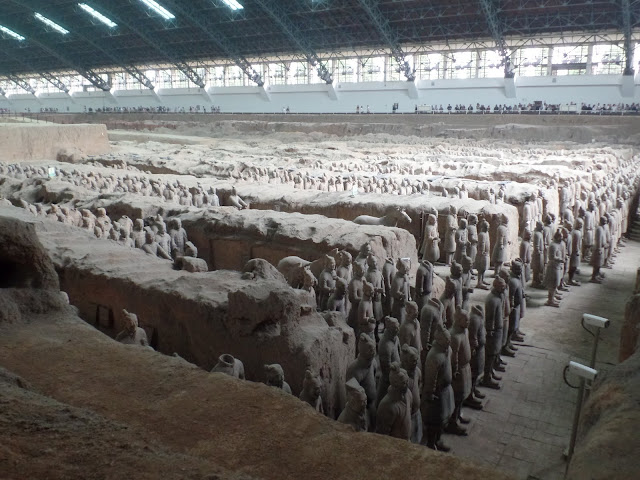 |
| Terracotta warriors and horses in battle formation |
As we walked down the side, we realised that the entire pit is still not fully excavated. Many broken pieces of the terracotta warriors and horses still lay within the pits, waiting to be restored in the future. All the introductions and explanations here have proper English translation, thus it shouldn't be an issue for international tourists to understand different parts of the pit.
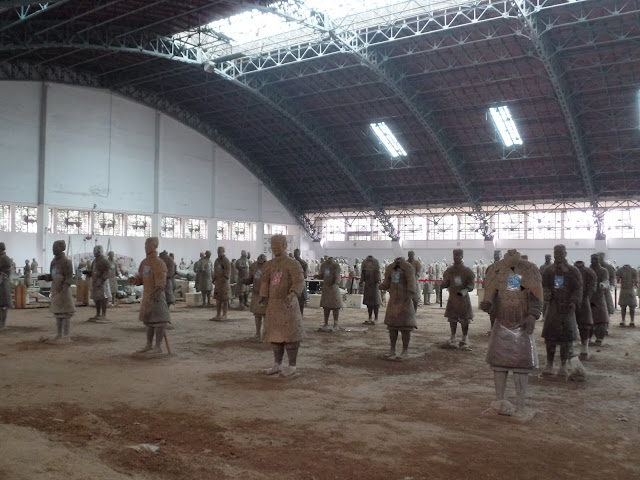 |
| Terracotta figurines undergoing restoration |
 |
| View of Pit 1 |
After touring one round the Pit 1, we proceeded to the Pit 2. Other than the terracotta warriors and horses, we can find war chariots and many bronze weapons here. There's an exhibition here to showcase some of the special discoveries, such as the Kneeling Archer, Standing Archer, Terracotta General, Cavalryman with the Saddled Horse and bronze weapons. At one area of the pit, we could see the excavation work is still on-going.
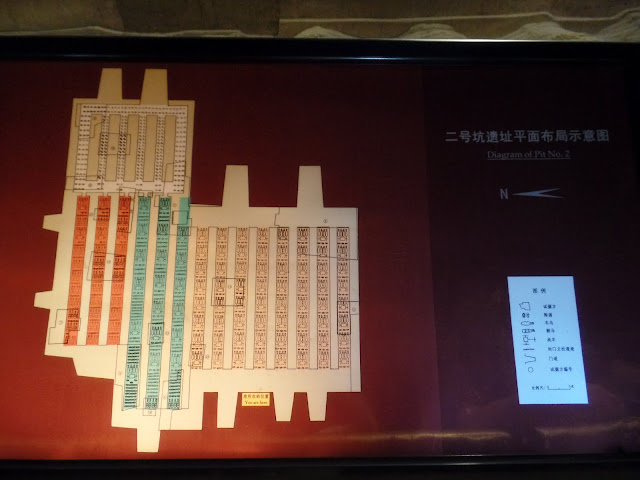 |
| Layout of Pit 2 |
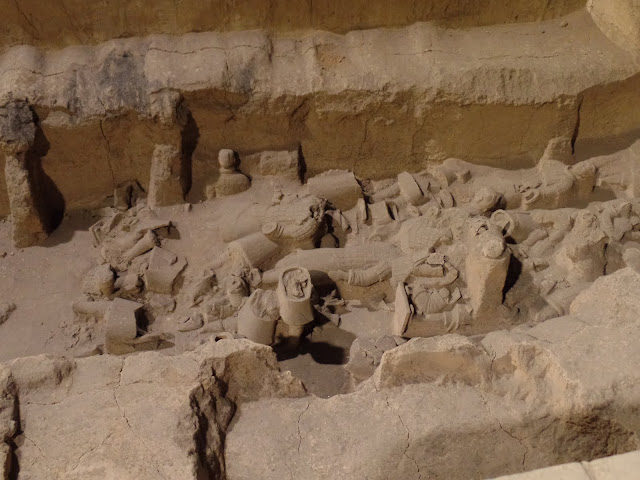 |
| Original state of remnants in the pit |
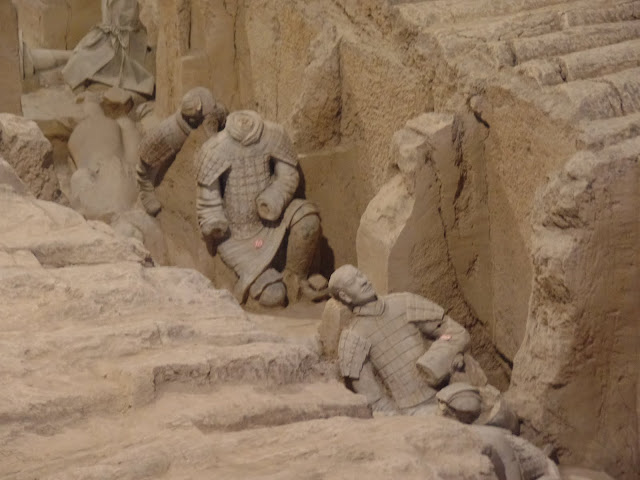 |
| Terracotta warriors |
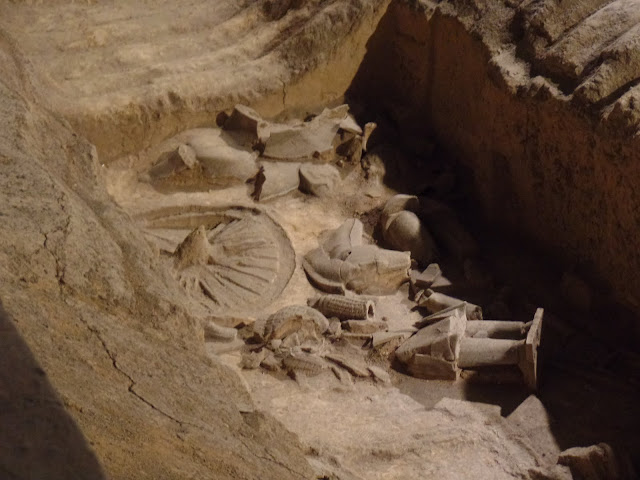 |
| Wheel of the chariot can be clearly seen |
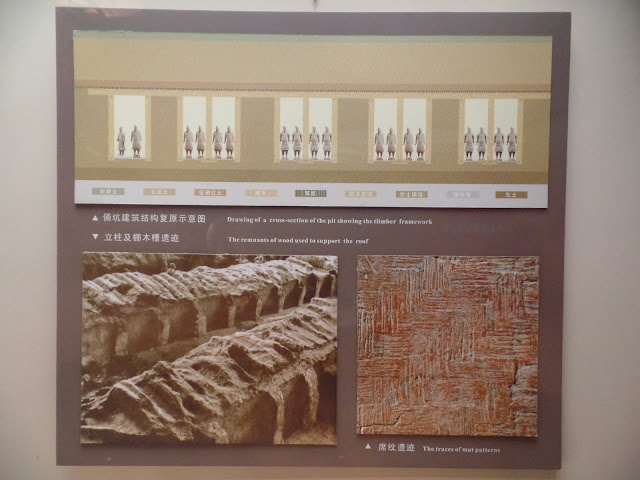 |
| Exhibition of the original structure of the burial pit |
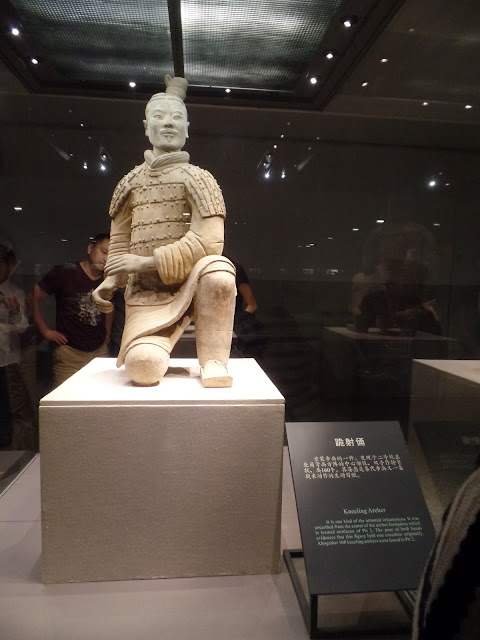 |
| Kneeling Archer |
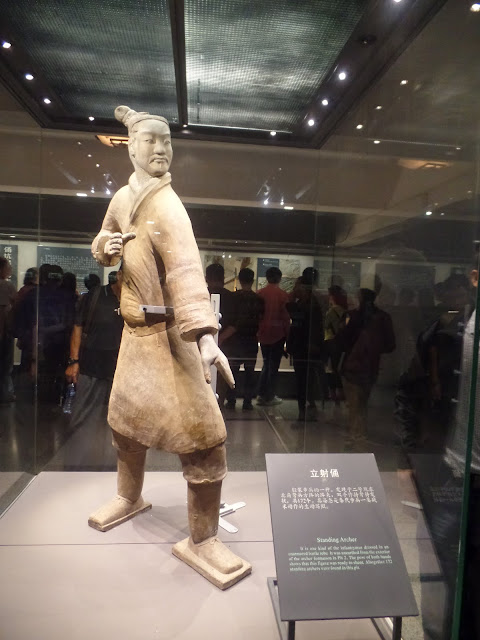 |
| Standing Archer |
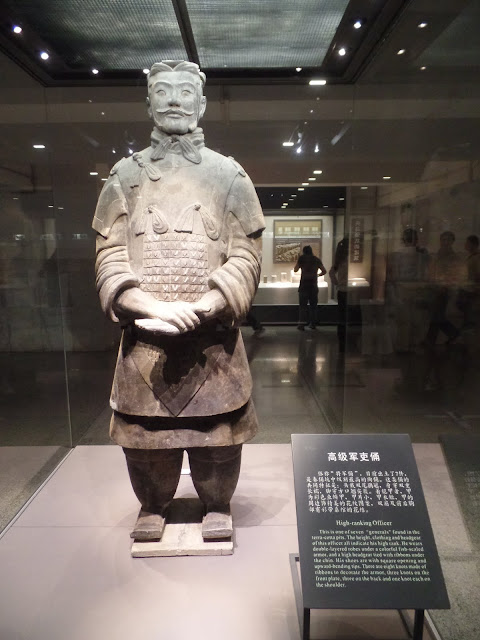 |
| Terracotta General |
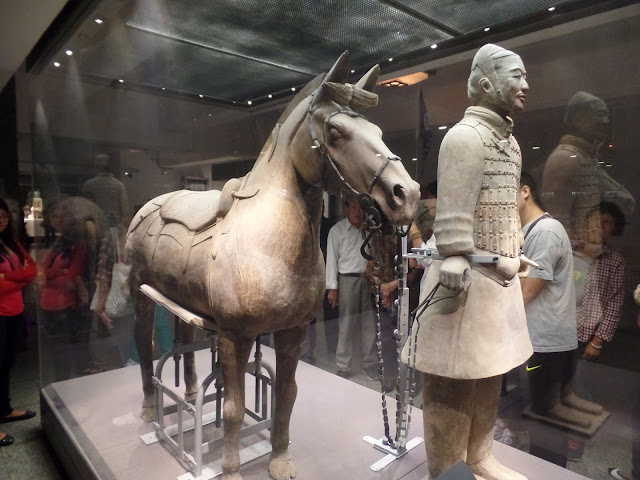 |
| Cavalryman with saddled horse |
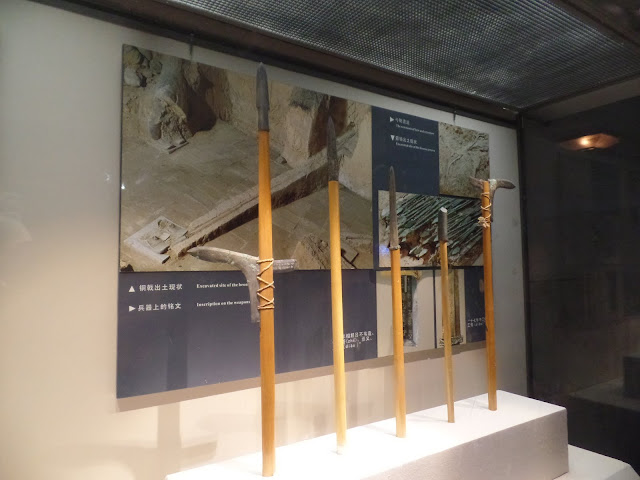 |
| Bronze weapons |
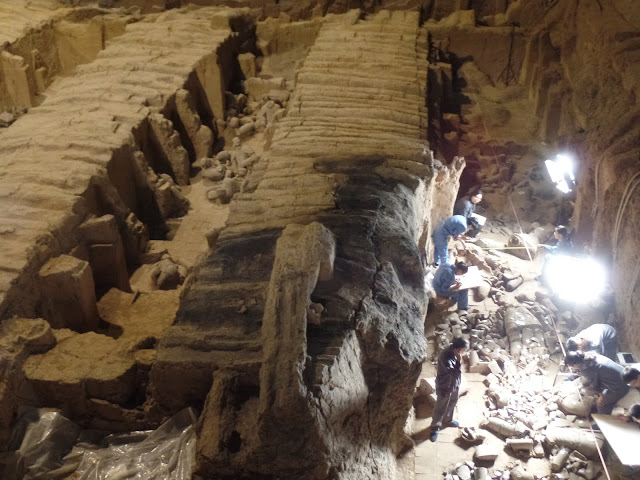 |
| Ongoing excavation work at Pit 2 |
Next at the Pit 3, it is much smaller, but the terracotta figurines here were better preserved, as the pit was not burned as compared to Pit 1 and 2. Even the original floor tiles can be seen here. It is believed by the experts that Pit 3 was the command centre of the terracotta army.
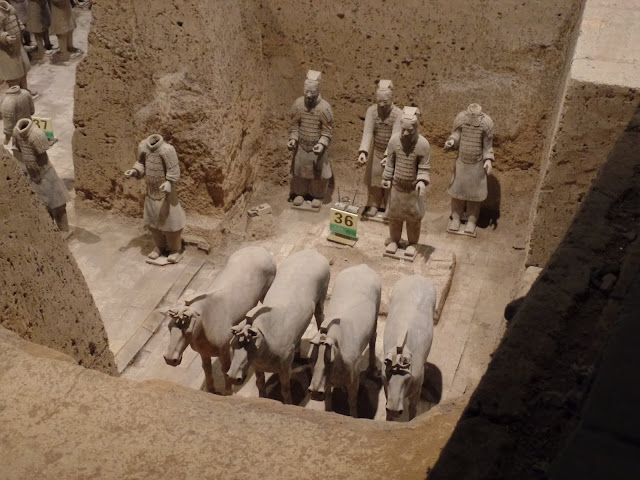 |
| Pit 3 - The Terracotta Army Command Centre |
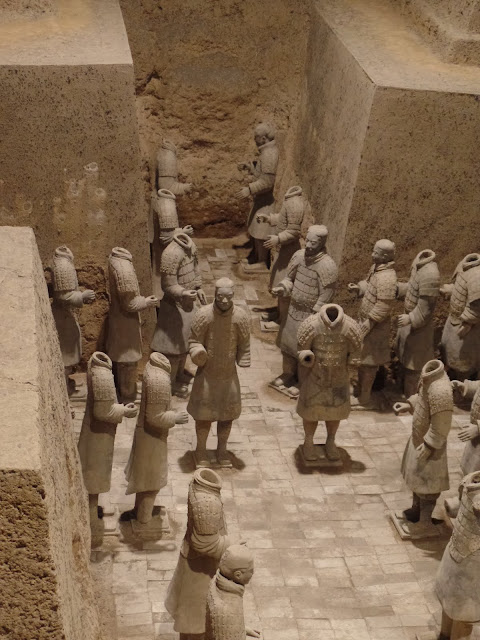 |
| View of Pit 3 |
After the Pits, we visited the Bronze Works Exhibition Hall. Over here, the highlight is the 2 large size bronze chariots, named as Chariot No. 1 and 2. These chariots are the most complete and best preserved ancient bronze works in the world.
 |
| Introduction of the bronze chariots |
 |
| Chariot No. 1 |
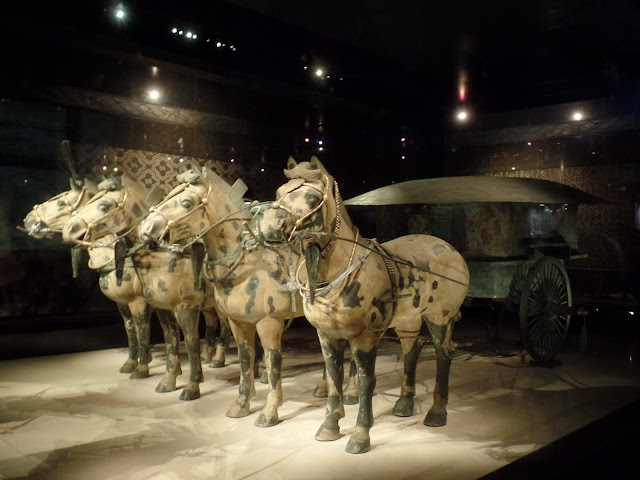 |
| Chariot No. 2 |
After this, we exited the museum, which led us to a long wide street. There are souvenir shops along the street, selling items related to the Terracotta Warriors. There's so much competition here that one could bargain for the best price. Almost every shop is selling the similar items. At the end of the street, it brings us back to the ticking office area. We had lunch here at the KFC before we leave.
Da Ci'en Temple (大慈恩寺) and Big Wild Goose Pagoda (大雁塔)
After lunch, we took the Tourist Bus 游 5 (306) back to Xi'an Railway Station (西安站). At the railway station, we then grab a taxi to our next attraction, the Big Wild Goose Pagoda (大雁塔). The Buddhist pagoda is another popular tourist attraction in Xi'an city and was built during the early Tang dynasty, which housed the Buddhist sutras and figurines that Xuanzang (玄奘) brought to China during from his pilgrimage to India. He is a famous figure which the character Tang Sanzang (唐三藏) in the classical Chinese literature (Journey to the West 西游记) is referenced. The pagoda is located within the Da Ci'en Temple (大慈恩寺) complex. Therefore, we need to purchase the entrance tickets to the temple first. The Da Ci'en Temple (大慈恩寺) is one of the best preserved imperial temples of the Tang dynasty, initially built to commemorate Emperor Gaozong's late mother.
 |
| Entrance tickets to Da Ci'en Temple |
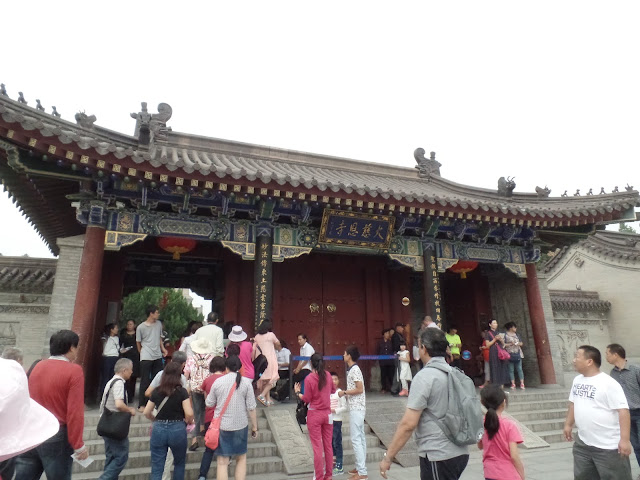 |
| Entrance of Da Ci'en Temple |
After the entrance, we could see the Mahavira Hall (大雄寶殿), which enshrined the Buddha statues of Shakyamuni, Vairocana and Mahavairocana. After which, we could see the seven storey high Big Wild Goose Pagoda (大雁塔).
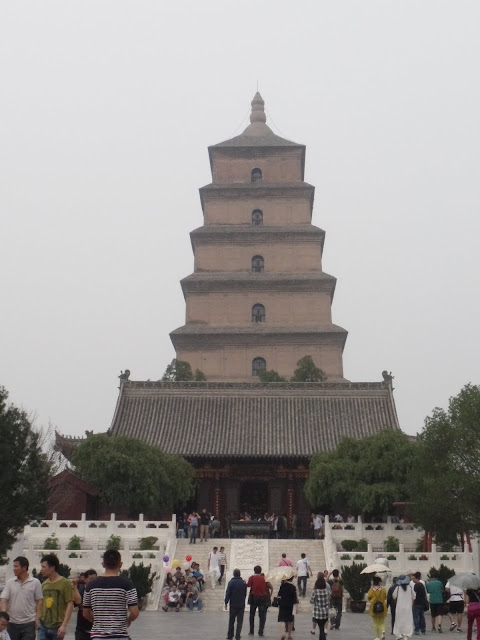 |
| View inside the Da Ci'en Temple |
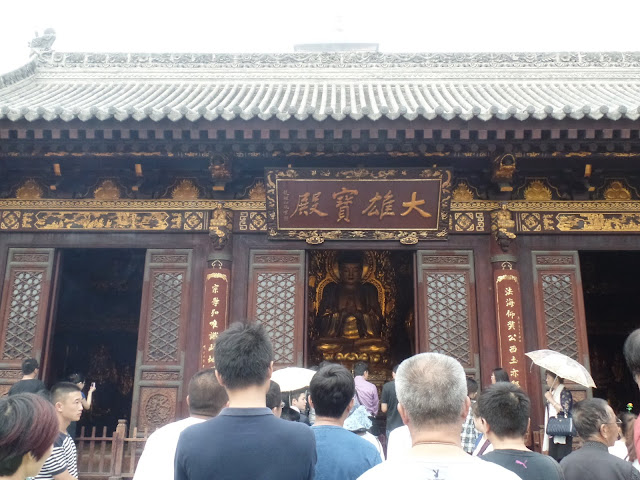 |
| Mahavira Hall |
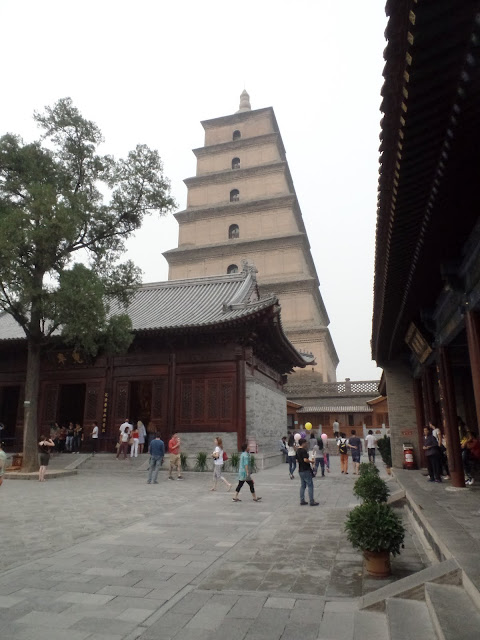 |
| View of the Big Wild Goose Pagoda |
We need to purchase another set of tickets to climb the pagoda. Inside the pagoda, we could see some of the original wall inscriptions dated to the Tang dynasty, as well as some small Buddhist relics on display. At the top of the pagoda, we got a good view of the surrounding area.
 |
| Entrance tickets to Big Wild Goose Pagoda |
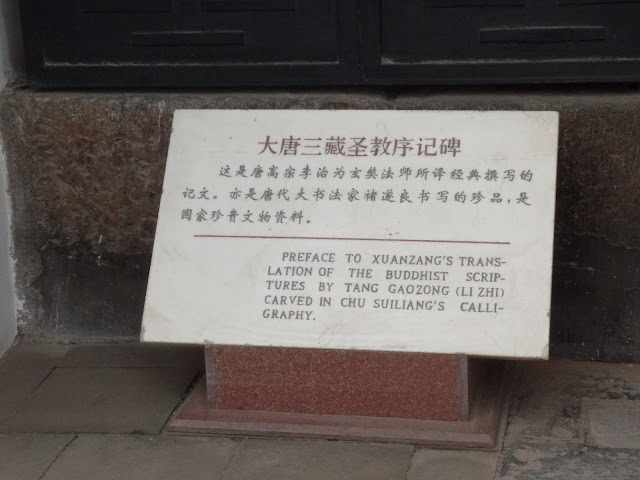 |
| Explanation of the inscriptions in the pagoda |
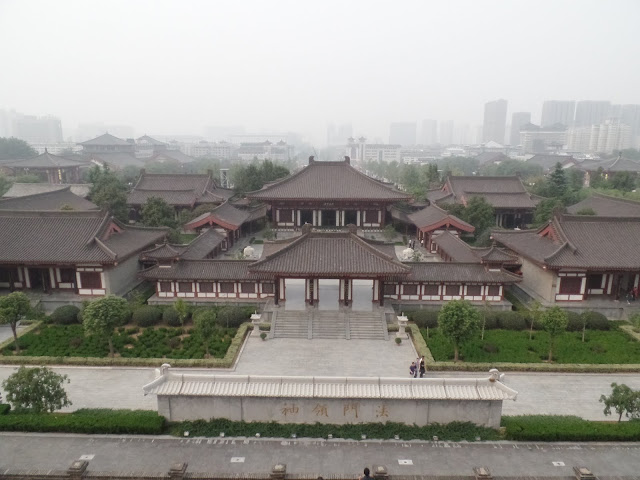 |
| View on top of the pagoda |
We did not spent too much time at the pagoda, and next we visited the Xuanzang Memorial Hall (玄奘紀念馆) located just behind the pagoda. The hall was built in honour of Xuanzang (玄奘), which we could find a bronze statue of him, as well as many stone and wood carvings on display. After this, we exited the temple.
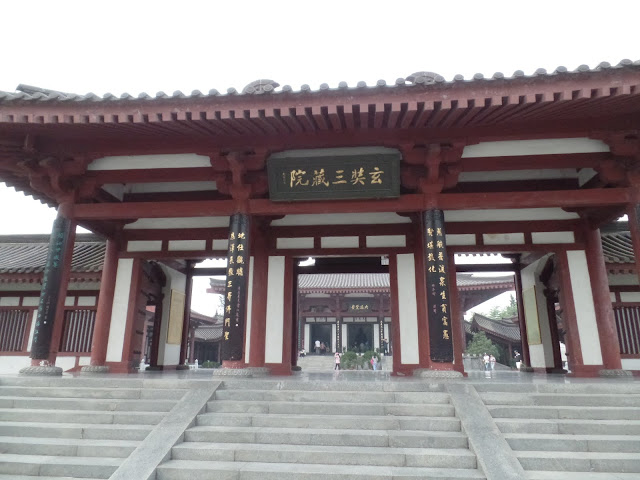 |
| Xuanzang Memorial Hall |
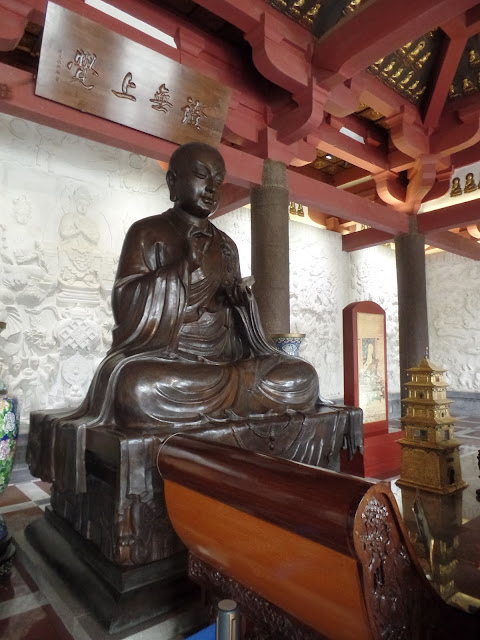 |
| Bronze statue of Xuanzang inside the memorial hall |
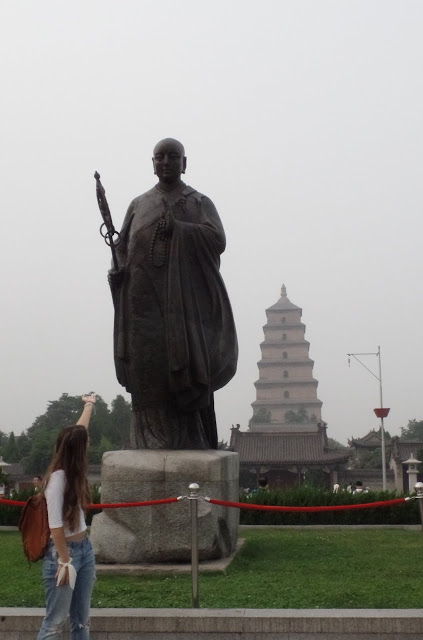 |
| Bronze statue of Xuanzang outside Da Ci'en Temple |
Tang Paradise (大唐芙蓉园)
We proceeded to the last attraction of the day, which is the Tang Paradise (大唐芙蓉园). From the Da Ci'en Temple (大慈恩寺), we walked eastwards for around 15 minutes towards the North Gate (春明门) and purchased the entrance tickets, one of the several entrances to the attraction.
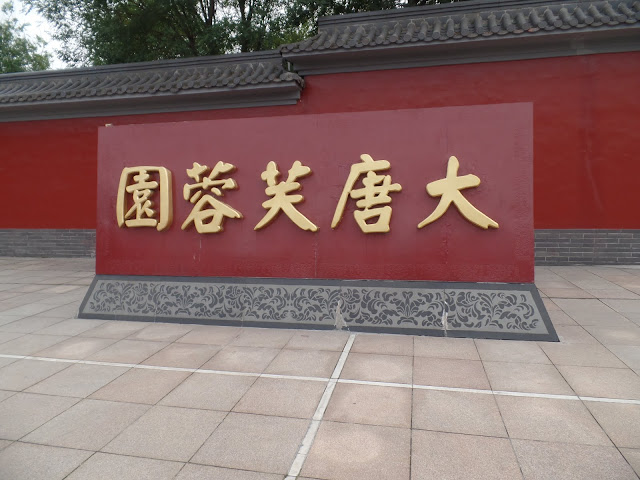 |
| Tang Paradise |
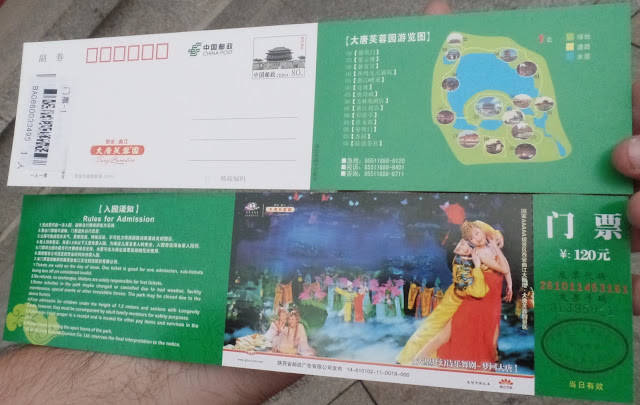 |
| Entrance tickets to Tang Paradise |
Tang Paradise (大唐芙蓉园) is a modern theme park displaying the culture and architecture of the Tang dynasty. The park is very big with a lake at the centre, and consists of several scenic regions, focusing on different cultural themes. There are several performances (e.g. lion dance and drum performances) at different sites and schedule, so we had to keep a lookout of them. Along the way, we could also see men on horses dressed like Tang imperial guards strolling around the park. From the entrance, we toured along the west bank of the lake, covering regions like the Apricot Garden (杏园), which displays the Tang dynasty imperial examination system, the Luyu Tea House (陆羽茶社), which focus on the traditional tea art and ceremony, the Children Recreational Area (儿童娱乐区), which has some interesting playground concepts and tells the story of the gifted children of the Tang dynasty and the Purple Cloud Tower (紫云楼) which focus on the culture of the Emperor's imperial life.
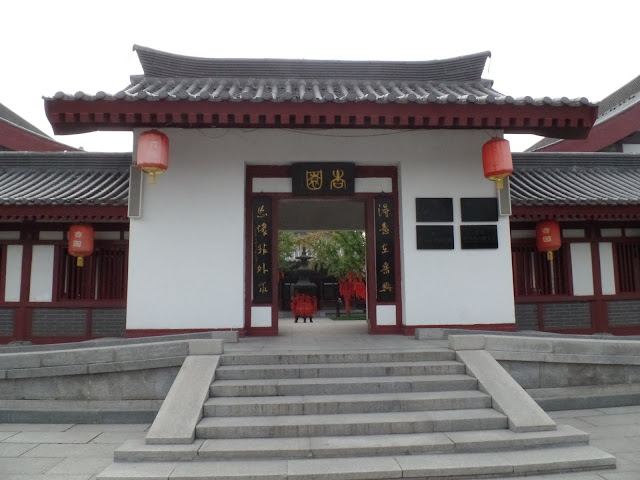 |
| Entrance to the Apricot Garden |
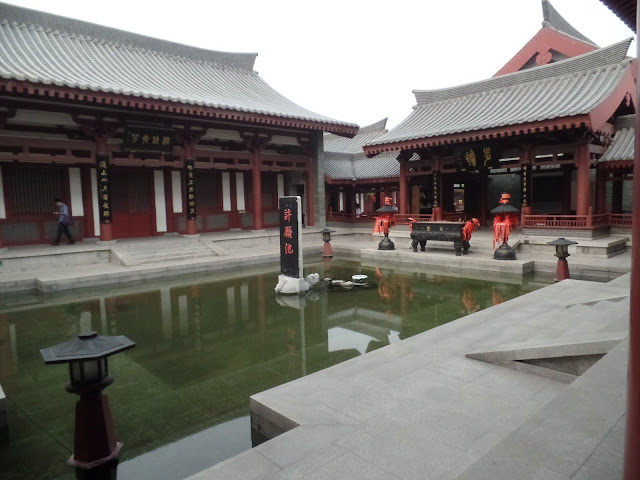 |
| Interior of Apricot Garden |
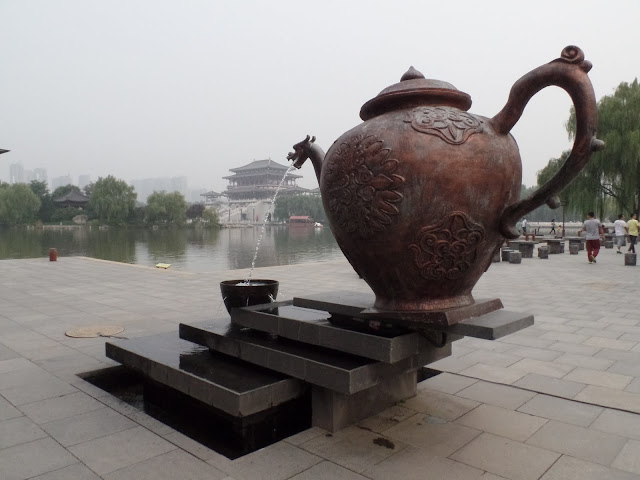 |
| Teapot sculpture beside Luyu Tea House |
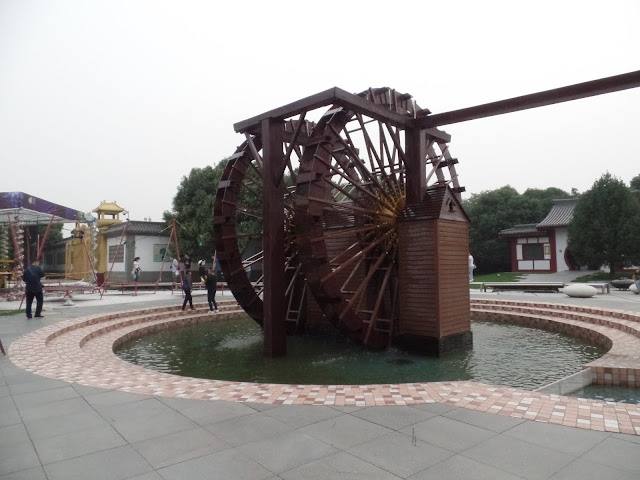 |
| Water wheel at the Children Recreational Area |
 |
| View of Purple Cloud Tower across the lake |
Near the South Gate, there's a world class theatre called Fengmingjiutian Theatre (凤鸣九天剧院) that housed the grandeur "Dream of Tang Dynasty (梦回大唐)" performance. This performance requires a separate ticket, which we did not watch.
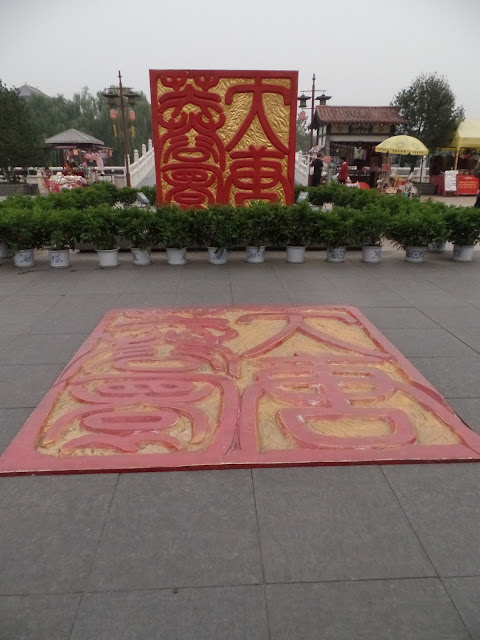 |
| Display at West Gate |
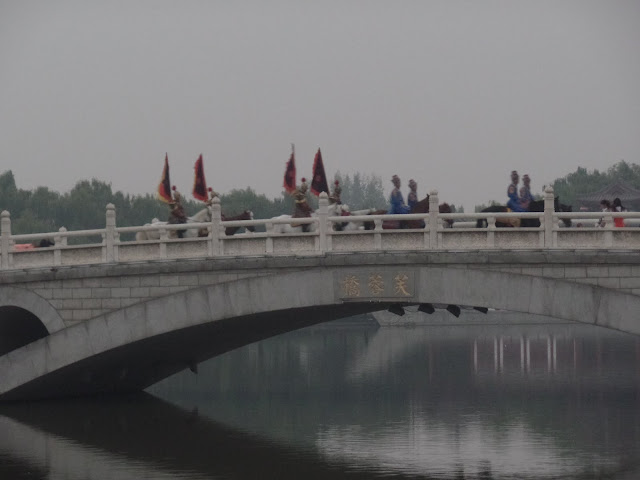 |
| Street Parade across the bridge |
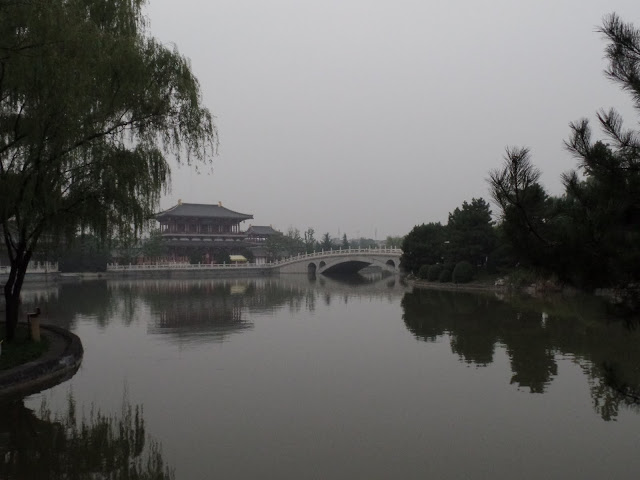 |
| Bridge near the West Gate |
There's not much choice of food in the park, thus we had our dinner at the Imperial Banquet Hall (御宴宫) near the West Gate (御苑门). This is a grand banquet hall and serves only Chinese food. We ordered minced pork wrap, roasted pigeon and spicy Chinese vermicelli with prawns.
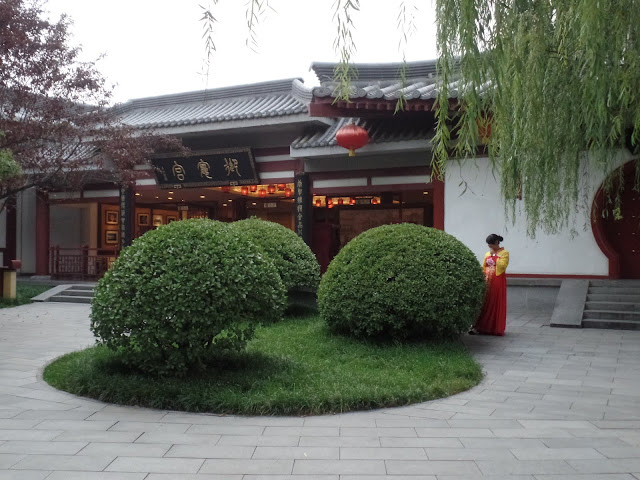 |
| Imperial Banquet Hall |
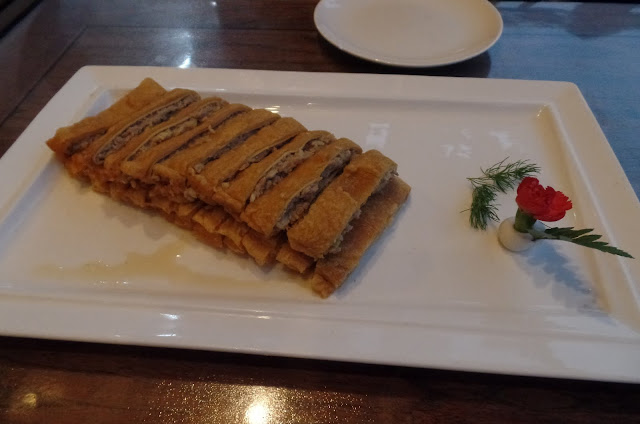 |
| Minced pork wrap |
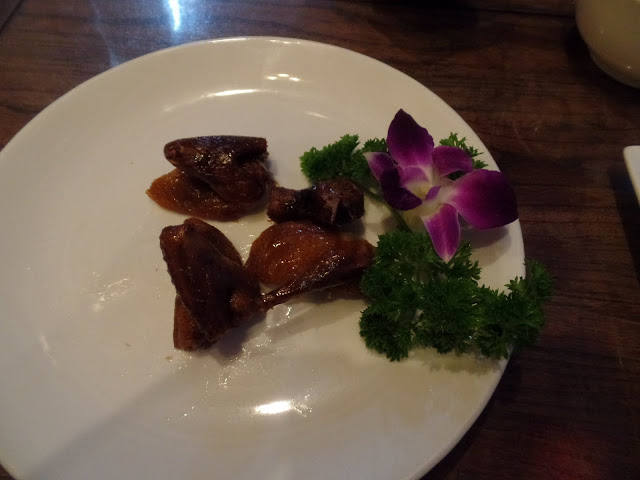 |
| Roasted pigeon |
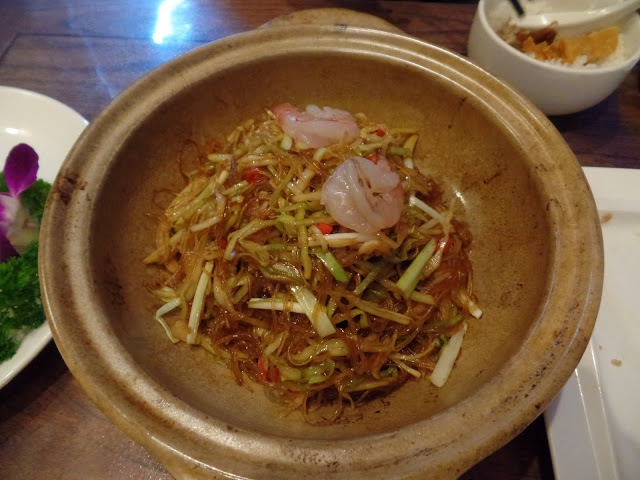 |
| Chinese vermicelli |
After dinner, it was already night time and the entire area provided another different experience with the streets and buildings lighted up with different colours.
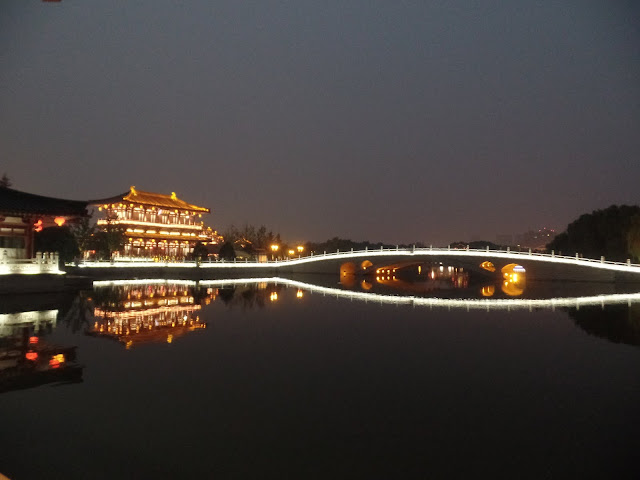 |
| Night view at Tang Paradise |
We then walked to the Purple Cloud Tower (紫云楼) as there will a spectacular water screen show called "Da Tang Zhui Meng (大唐追梦)". The show encompasses the world largest water screen display, coupled with laser and special effects, and the performance that tells the history and culture of the ancient Tang dynasty. Visitors could pay a fee to get a good view sitting at the terrace, otherwise like myself could stand at the side of the terrace to watch it free.
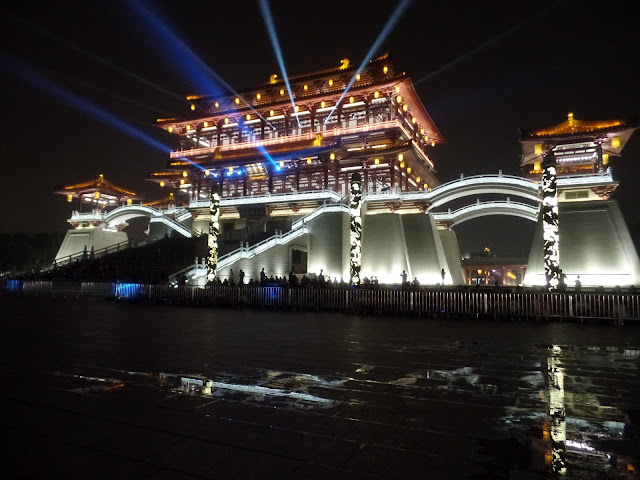 |
| Night view at the Purple Cloud Tower |
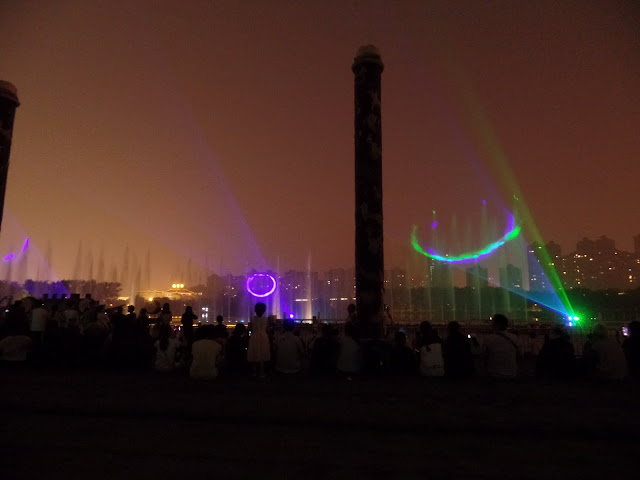 |
| Water Screen Show Performance |
After the show, we exited the theme park via the West Gate (御苑门) and took a taxi back to the hotel.
 |
| Night view outside West Gate |
Follow the links below to the other days of my China tour:
Day 1: Beijing (Yonghe Lama Temple, Shizhahai, Prince Gong Mansion, Behai Park, Gui Jie)
Day 2: Beijing (Tiananmen Square, Forbidden City, Old Summer Palace, Wangfujing)
Day 3: Tianjin (Italian Style Town, Nanshi Food Street, Drum Tower, Ancient Cultural Street, Quanjude Peking Roast Duck)
Day 4: Xi'an (Muslim Street, Drum Tower, Bell Tower, Xi'an City Wall, Defu Alley)
Day 5: Xi'an (Terracotta Army Museum, Da Ci'en Temple, Big Wild Goose Pagoda, Tang Paradise)
Day 6: Huashan
Day 7: Beijing (Temple of Heaven, Silk Street)
Day 8: Beijing (Great Wall - Badaling, Ming 13 Tombs - Ding Ling, Shizhahai)
Day 9: Beijing (Summer Palace)





















































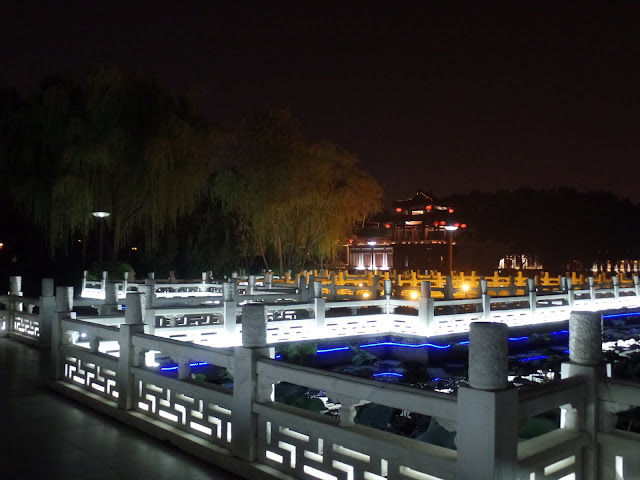
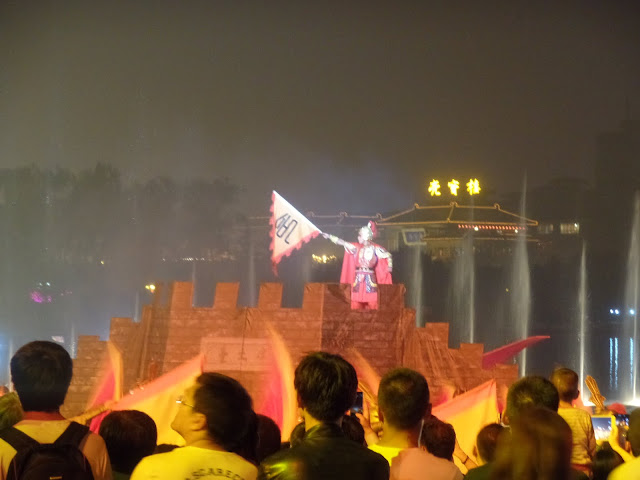
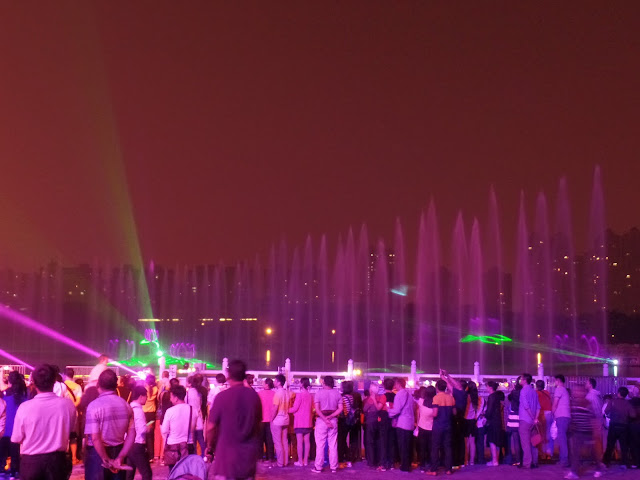
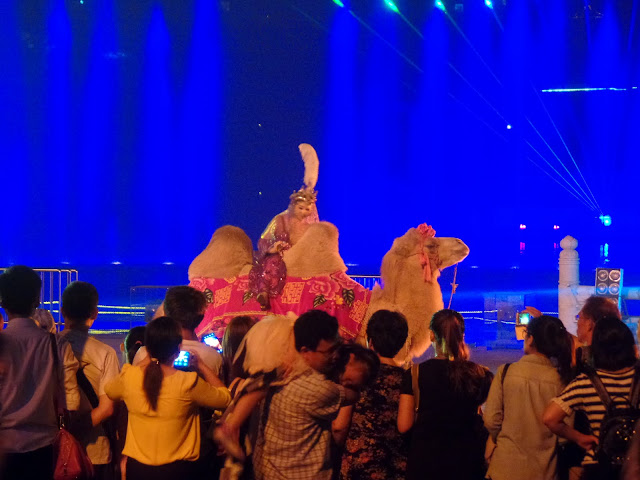

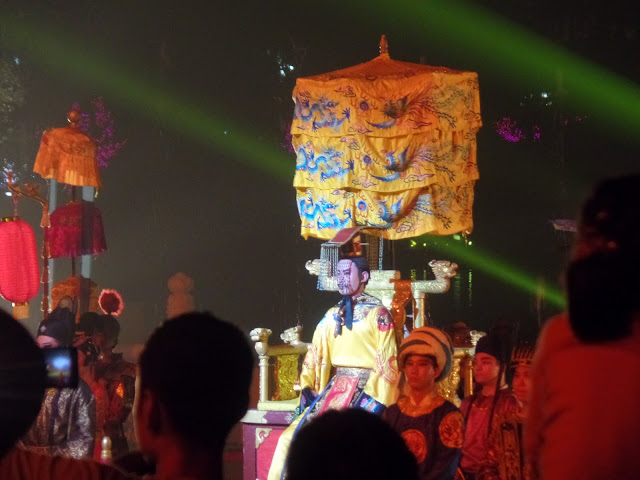
No comments:
Post a Comment